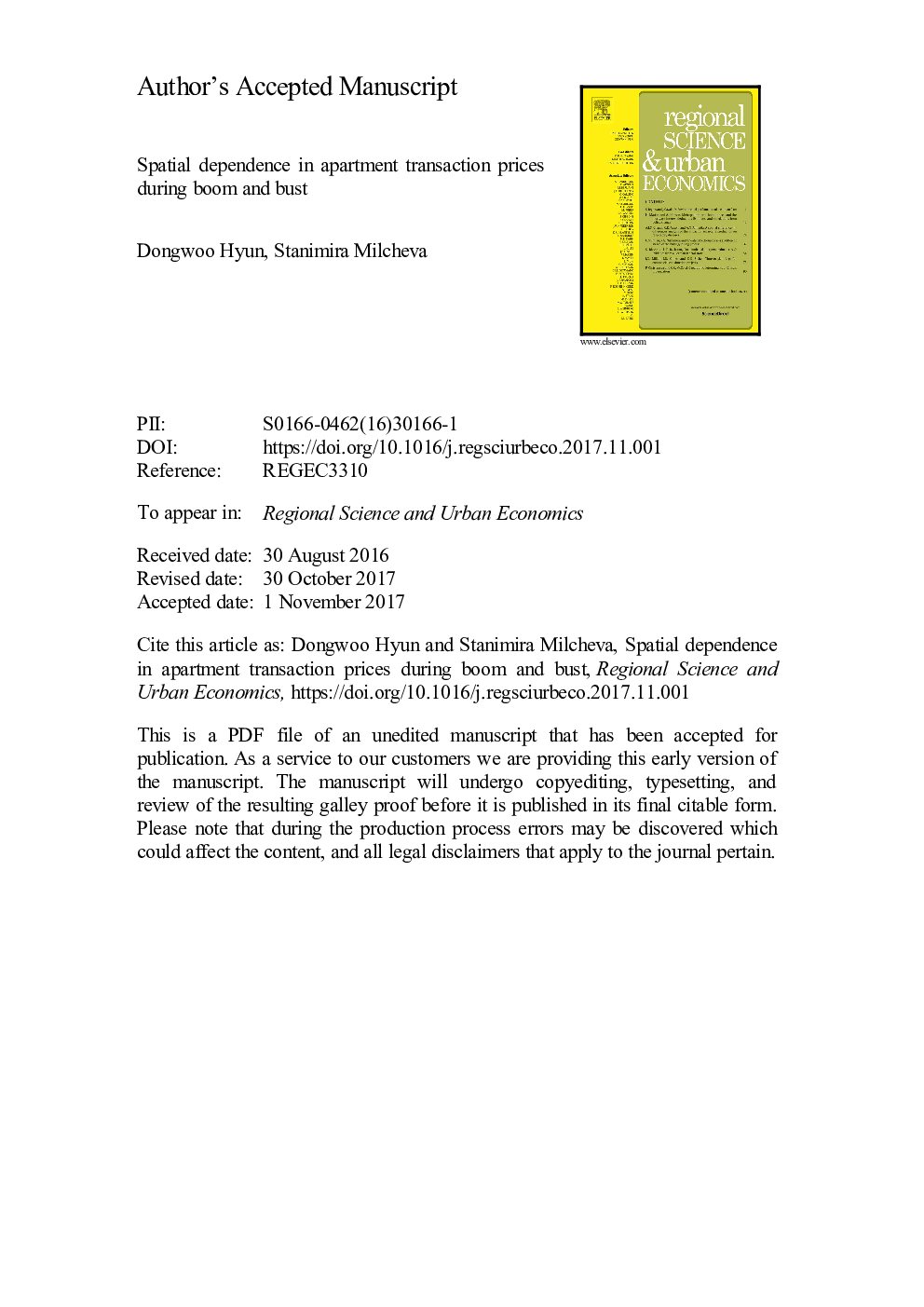| Article ID | Journal | Published Year | Pages | File Type |
|---|---|---|---|---|
| 7383729 | Regional Science and Urban Economics | 2018 | 29 Pages |
Abstract
Due to the illiquid and intransparent nature of housing markets, property sellers and buyers may hugely rely on information about transaction prices of nearby properties with comparable characteristics to agree upon a transaction price. We show that the spatial dependence in house prices is more pronounced in a rising housing market than in a falling market and can be associated with behavioural biases such as sellers' loss aversion tendency or herding of buyers. Using a spatio-temporal autoregressive model for 30,541 apartment transactions in Seoul, South Korea between 2006 and 2015, we find that spatial dependence in house prices is eight time higher in a boom as opposed to a bust. This shows huge asymmetric spatial effects across apartment transactions which suggests that neighbouring property prices can serve as an appropriate benchmark during a rising market but they may not be suitable to capture the housing market dynamics in a falling market. This implies that behavioural aspects such as sellers' loss aversion should be taken into account in the price formation when house prices are falling.
Related Topics
Social Sciences and Humanities
Economics, Econometrics and Finance
Economics and Econometrics
Authors
Dongwoo Hyun, Stanimira Milcheva,
